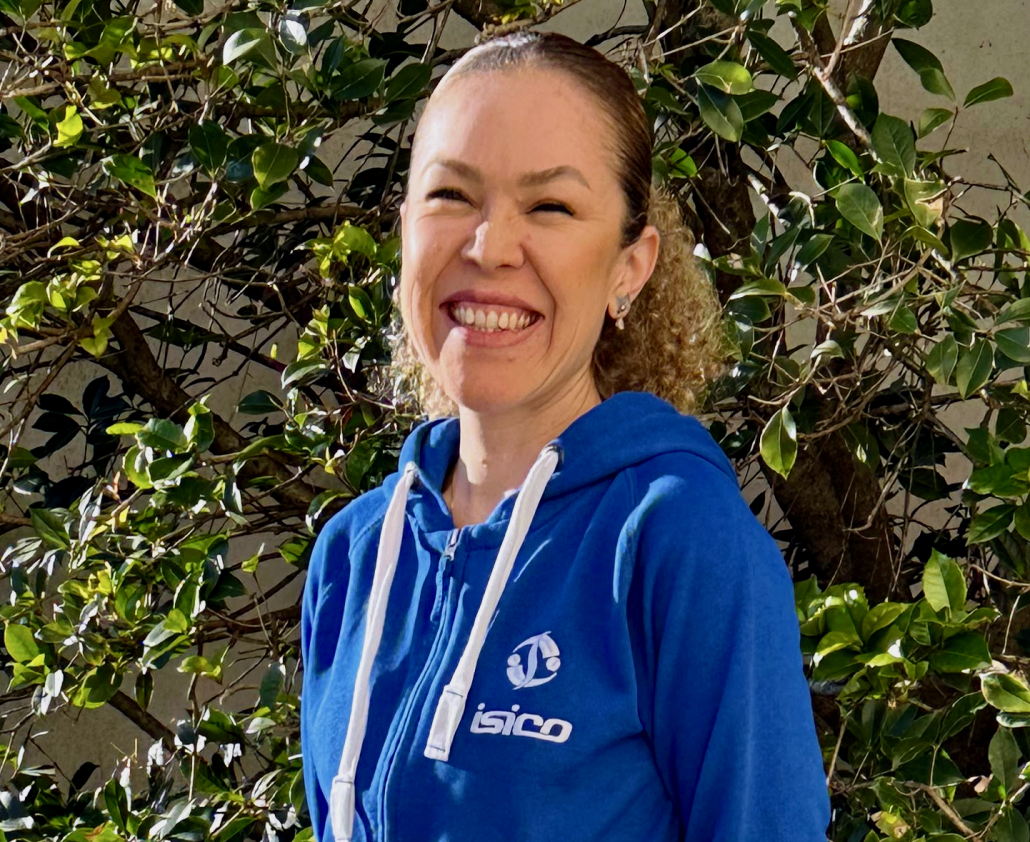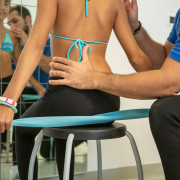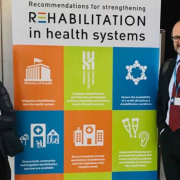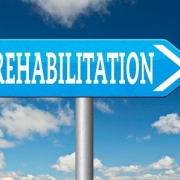Isis Navarro shares her experience in Italy
We took advantage of the presence of the Brazilian physiotherapist Isis Navarro in Italy, currently working at some ISICO facilities, to get to know her better and have her tell us about her professional experience in collaboration with ISICO.
Would you like to tell us something about yourself on a professional level?
I am a physiotherapist passionate about treating patients with scoliosis.
I completed my undergraduate degree in 2010, my master’s degree in 2018, and my PhD in 2023. In 2017 and 2018, I obtained certification in the SEAS Approach in Brazil with Michele Romano, the physiotherapy director of Isico, and Alessandra Negrini. Since then, I have dedicated my professional life exclusively to treating patients with scoliosis, and currently I am the technical director for the treatment of scoliosis in its entirety at the four units of Clínica Linear in Brazil.
How long have you been collaborating with ISICO and how did this collaboration arise?
Our collaboration began in January 2020 when, during a visit to ISICO in Milan, Michele discussed with me the possibility of offering SEAS Approach certification in Brazil, with myself serving as the local instructor. Unfortunately, the pandemic began shortly after, and I continued my training with Michele online for two years. In January 2022, we successfully conducted Brazil’s first SEAS Approach certification course in partnership with ISICO. To date, over 200 physiotherapists from all regions of Brazil have been certified in the SEAS Approach, and 14 courses have already been completed.
Why the SEAS Approach? What are its advantages, and how has it influenced your rehabilitation practice?
The SEAS Approach stands out for its remarkable flexibility, adaptability, and strong foundation in rehabilitation principles, which are consistently applied throughout the treatment process. These qualities made it easy for me to adopt the SEAS method when treating patients with scoliosis. Additionally, its extensive scientific foundation and the wealth of published studies demonstrating the robustness of its results provide me with confidence and reassurance when using the SEAS Approach to treat patients from around the globe.
Now you are in Italy—Why and for how long?
The “icing on the cake” of this partnership is the opportunity to experience ISICO’s routine directly here in Italy! I have moved with my entire family to live in Italy for about a year. The aim is to immerse myself even further in ISICO’s methodology for treating scoliosis and other spinal conditions, given that ISICO is undeniably the global leader in evidence-based scoliosis treatment today.
SEAS Course in Portugal: What can you tell us about this upcoming event?
During this period in Europe, we are seizing the opportunity to expand the reach of SEAS Approach certification. In January, we will launch the first SEAS course in Portugal. This initiative arose from the geographical proximity and the advantage of a shared language, making it a natural step forward. We are excited to bring this certification to new regions and hope this will be the first of many courses offered in Portugal in the future.







